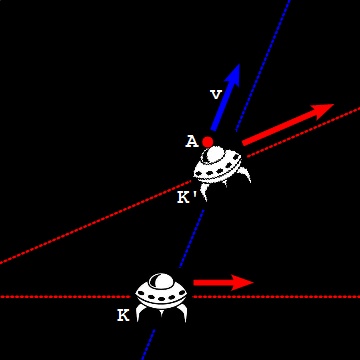Physics Notes - Herong's Tutorial Notes - v3.25, by Herong Yang
The Principle of Relativity
This section provides an example of law of physics, Newton's First Law of Motion, to help understanding the first assumption of the special theory of relativity: The Principle of Relativity.
To help us understanding better the first assumption of the special theory of relativity: "The Principle of Relativity - The laws of physics are the same in all inertial frames", we can use Newton's First Law of Motion as an example.
Newton's First Law of Motion says: "If the net force acting on an object is zero, then the velocity of the object is constant".
As a law of physics, the above statement must be true in all inertial frames. In other words, if the net force acting on an object is zero, then the velocity of the object will be constant, or no acceleration, no matter from which inertial frame to observe it.
For example, two spaceships are traveling in deep space in inertial frame motion represented by K and K'. If a ball A is traveling along K' with net force acting on it, an observer from K' will see the ball is at rest. Its velocity stays zero, a constant velocity. Another observer from K will see the ball is moving away from K with K' with a constant speed in a straight line, a constant velocity.

Table of Contents
Introduction of Frame of Reference
►Introduction of Special Relativity
Assumptions of Special Relativity
What Is an Inertial Frame of Reference
The Constancy of the Speed of Light
Time Dilation in Special Relativity
Length Contraction in Special Relativity
The Relativity of Simultaneity
Minkowski Spacetime and Diagrams
Introduction of Generalized Coordinates